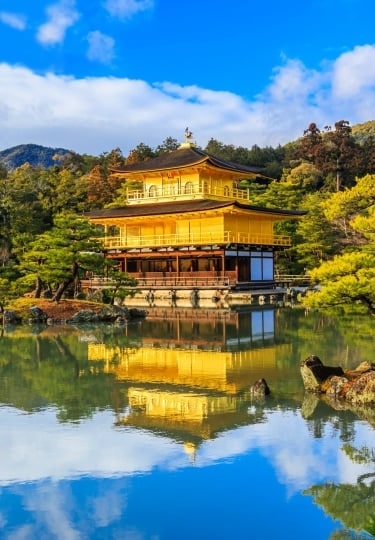If you’re planning a trip to Japan, schedule at least two days in Kyoto, which is arguably the most beautiful city in the country. Stroll cobblestone streets where Geishas once lived. Explore ancient temples and modern-day factories producing some of the world’s best sake. Use Kyoto as your home base to explore nearby cities like Kobe and Osaka.
With this two-day itinerary for Kyoto, you’ll enjoy some of the best temples, views, and experiences the city has to offer.
Day 1
8 a.m.: Visit Japan’s first capital city, Nara
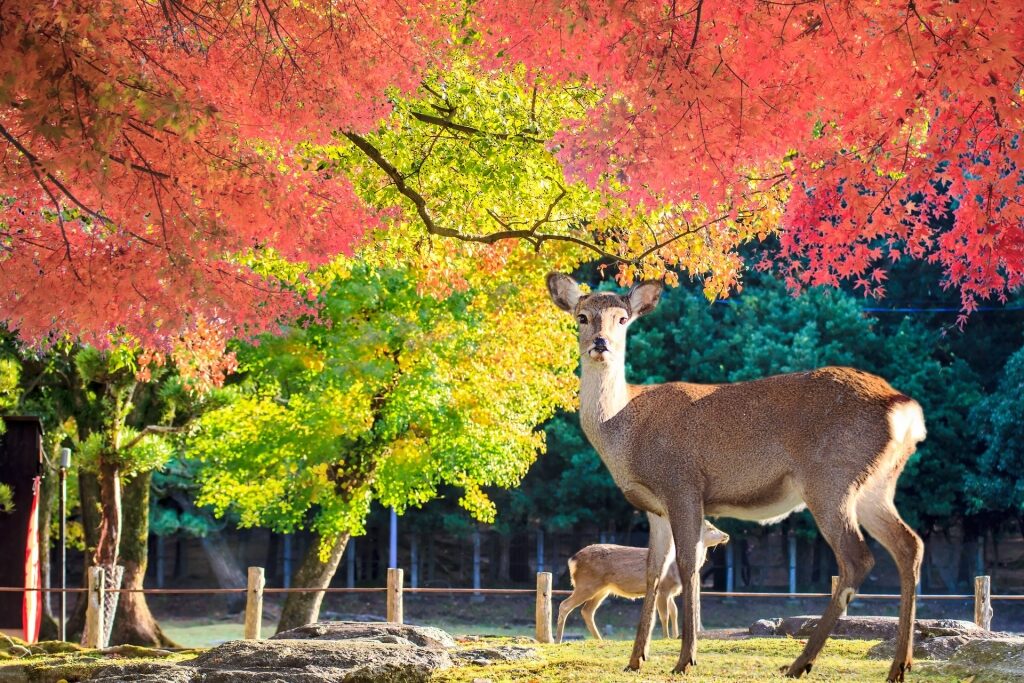
Nara Park
If you only have two days in Kyoto, plan to dive right in. Your Kyoto two-day itinerary starts with a visit to Nara, the first capital of Japan. Nara is one of the most beautiful places in Japan and a great place to experience the country’s ancient culture in only a few hours.
Most of the best sightseeing attractions are centered around Nara-kōen, a sprawling park filled with hundreds of deer in the center of the city. The deer were considered sacred by the emperors, and while the capital is now Tokyo, the deer have made Nara their permanent home. You can buy crackers at various places around the park for a small fee, and the deer will gently nibble them right out of your hands.
Read: Tokyo 3-Day Itinerary
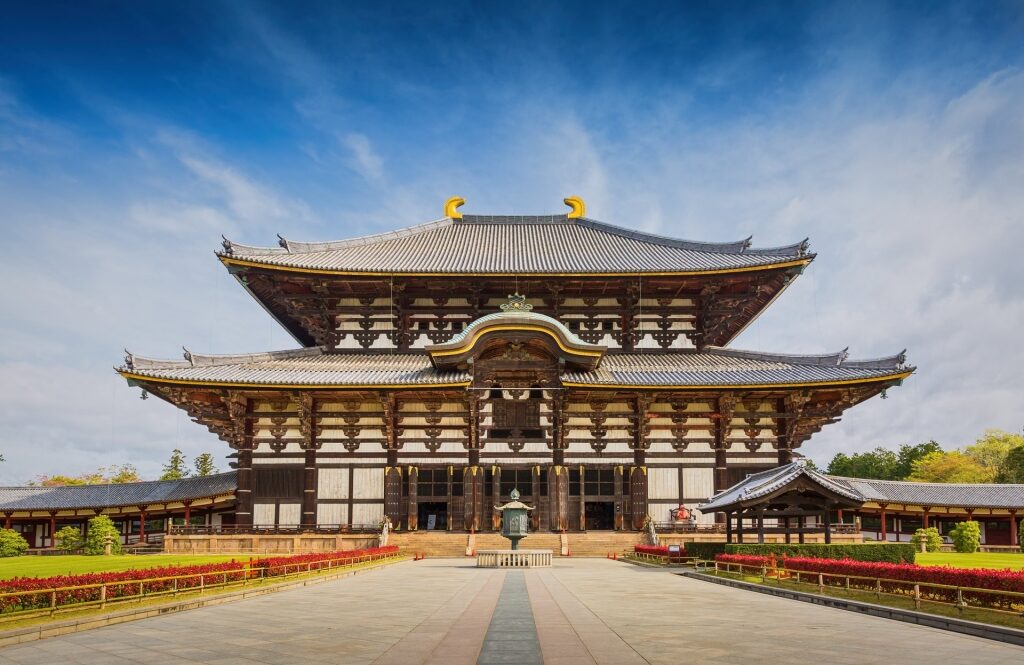
Todaiji Temple, Nara
While in Nara, be sure to stop by some of the town’s best sights. You can’t miss Todaiji Temple, one of the most famous temples in Japan. It’s hard to believe this new version, constructed in the 1600s, is smaller than the original. This is also where you’ll find the huge “Buddha head” and accompanying “Buddha’s nose.” It’s said that people who can squeeze through his nostril will have good luck—though it’s generally only kids who can fit.
Vendors outside sell small souvenirs. Make a donation to the temple at a fortune box, and you’ll receive a small piece of paper with your fortune on it. This is one of the top temples to visit if you only have two days in Kyoto, since it’s both beautiful and significant to Japanese culture.
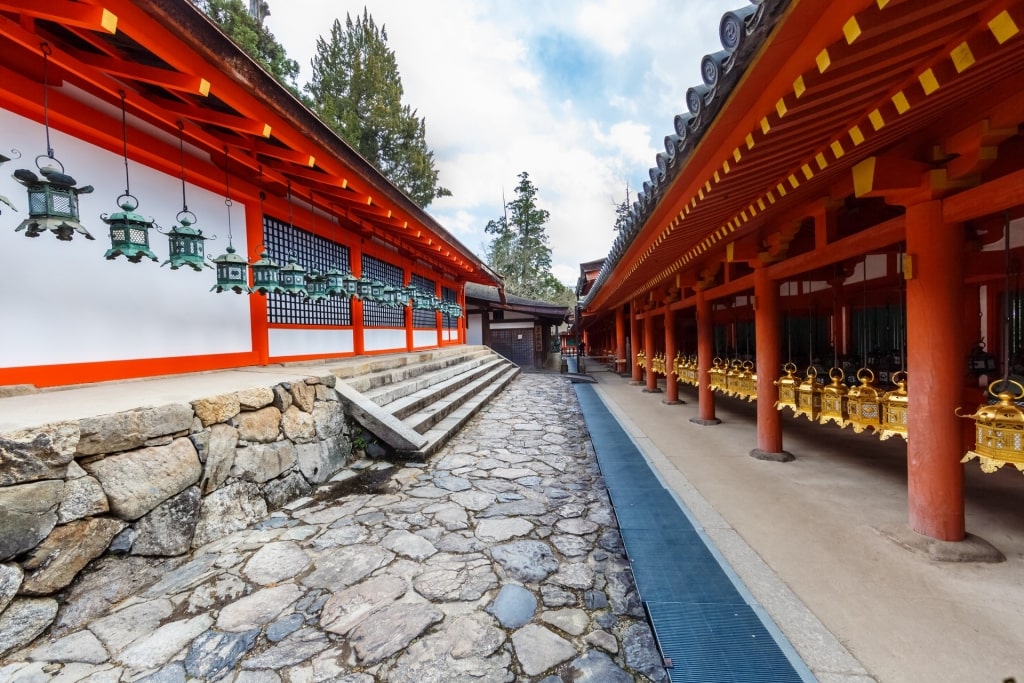
Kasuga Taisha, Nara
Another worthwhile stop during your Kyoto trip’s two-day itinerary is Kasuga Taisha, also in Nara. The sprawling shrine was built in 768 C.E. and has been the family shrine for some of Japan’s most powerful and influential lineages over the centuries.
Well-recognized for its famous hanging lanterns, you can visit the outdoor shrine or tour the inside. If you’re interested in architecture, arrange an architecture and art tour in advance to make sure you don’t miss a single detail of the impressive structure.
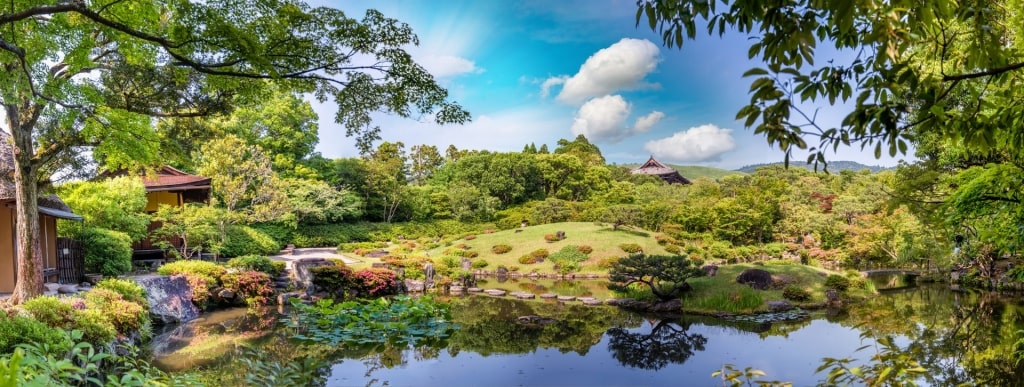
Isuien Gardens, Nara
While in Nara, make time to visit Nigatsudo Hall, which has a beautiful, foliage-lined cobblestone street leading to its entrance; the lotus garden at Taimadera Temple; and the park’s peaceful Yoshikien and Isuien Gardens. The latter features a few tea houses that feature a selection of green and black teas, Japanese pastries, and small snacks.
There’s a lot to see in Nara, so plan to spend the whole morning here. You might want to bring a small backpack to carry snacks and a guidebook to help you identify the town’s many sights. You can also pick up maps at most of the park entrances.
12 p.m.: Try ramen in Kyoto Station
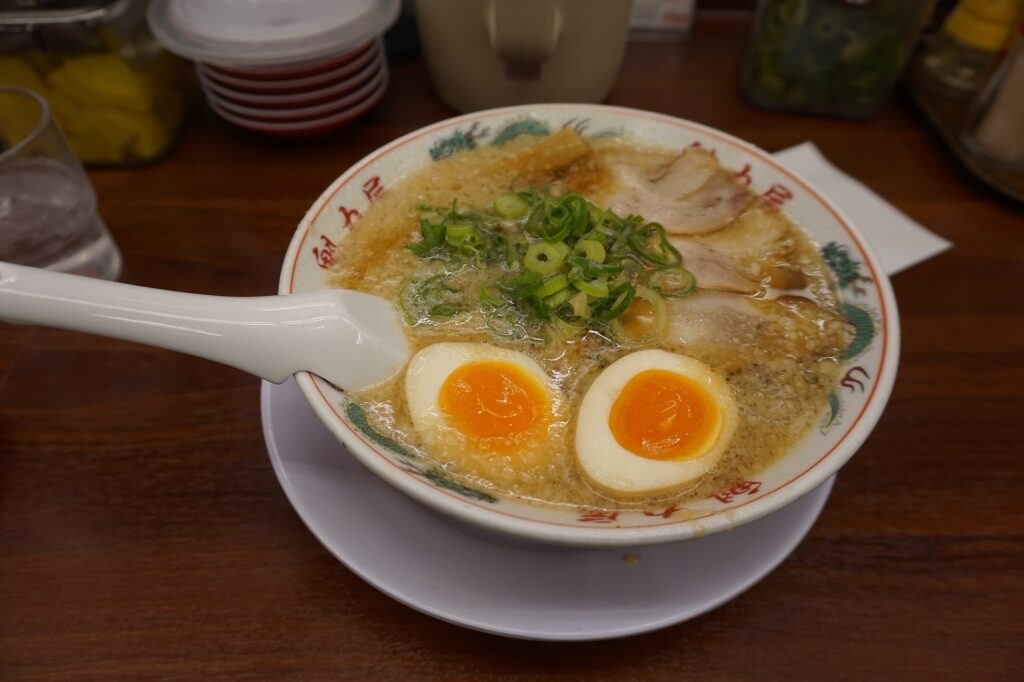
Ramen
If there’s one sight you can’t miss in Kyoto, it’s the Golden Pavilion. So plan to leave Nara around noon and take the JR train from Nara to Kyoto, which takes about 40 minutes. It’s easy and efficient, and you’ll arrive directly at Kyoto Station.
Once at the station, head to Kyoto Ramen Koji for lunch. The menu features different ramen dishes from around the country, so you can try various versions of Japan’s most famous food. In true Japanese fashion, you’ll order from a vending machine. There are plenty of photos on the screens to help you determine what you’re ordering.
Read: Best Things to Eat in Kyoto
1 p.m.: Marvel at the Golden Pavilion and Ryoanji Temple
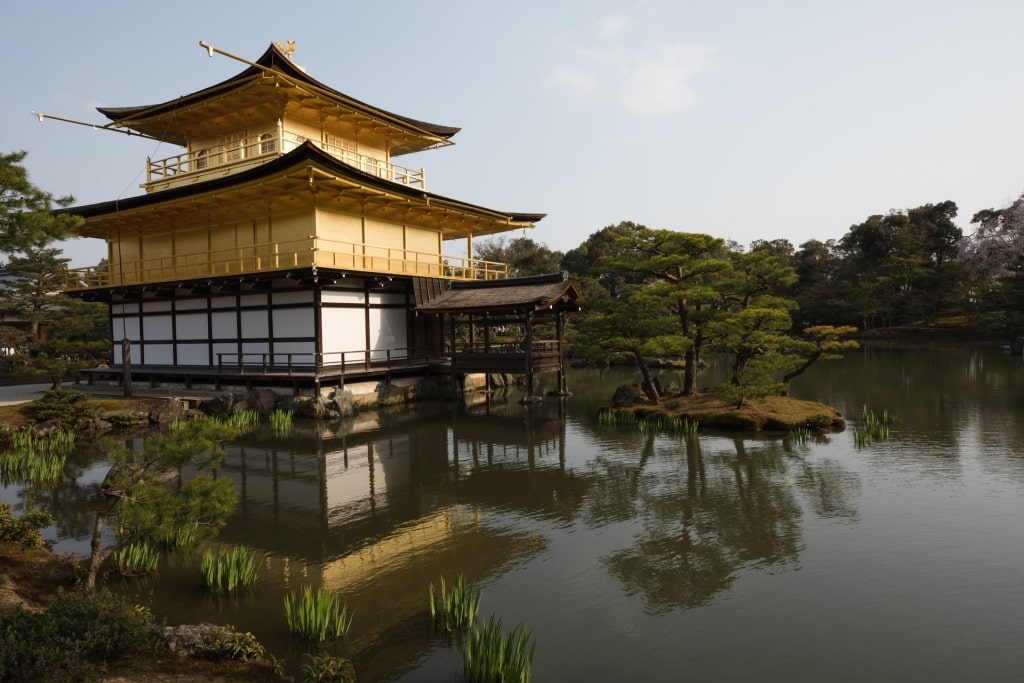
Golden Pavilion
Once you’ve had your fill of ramen, get back on the train and head to Kitaoji Station, which is about 15 minutes north of Kyoto Station. From here, you’ll have about a 30-minute walk to reach the Golden Pavilion.
Once you arrive at the Pavillion, take your time strolling through the temple grounds and gardens, visiting the tea house, and snapping photos from across the pond. The upper two floors are paneled in gold leaf, so taking photos in the afternoon when the sun is brightly shining truly makes the temple light up.
3 p.m.: Visit Ryoanji Temple
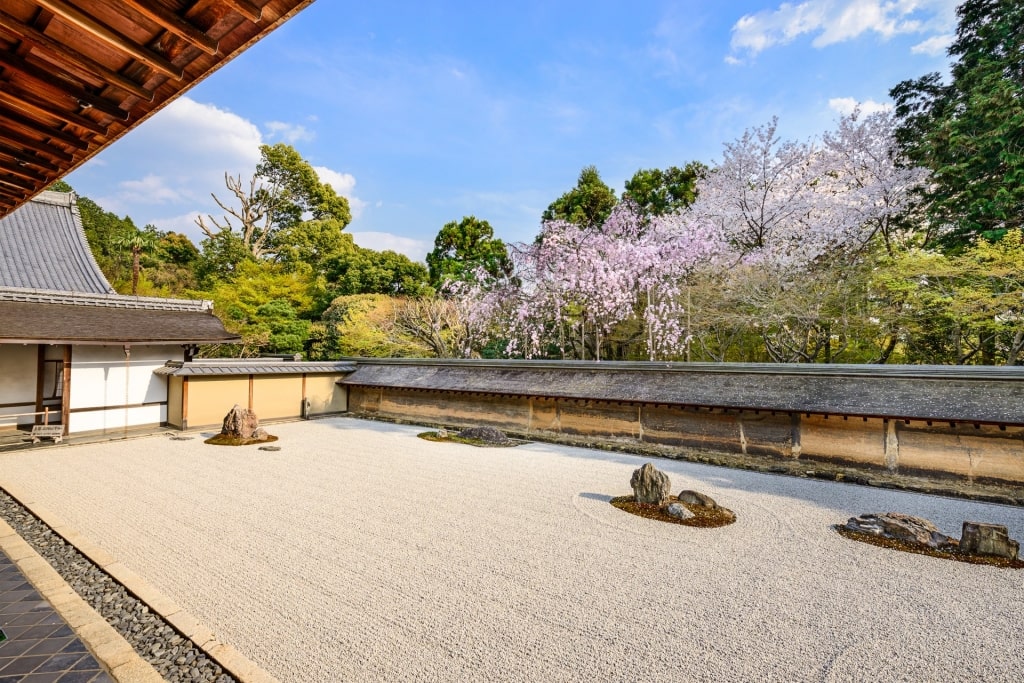
Ryoanji Temple
If your legs are still feeling strong, walk another 15 minutes down the street to Ryoanji Temple. The temple is home to what may be Japan’s most famous rock garden, a sprawling space surrounded by lush trees and a park area.
If you’re feeling a bit of an afternoon slump by now, stop by the on-site vegetarian restaurant, Ryoanji Yudofu. You can order small dishes to split or opt for tea service. Either way, you’ll get to experience a dining room filled with tatami mats that features beautiful views of the grounds.
From here, wander back to Kitaoji Station. Take the train to Kyoto Station, then the Shinkansen train to Osaka, which is a quick 15-minute trip.
6:30 p.m.: Dinner by Osaka Castle Park
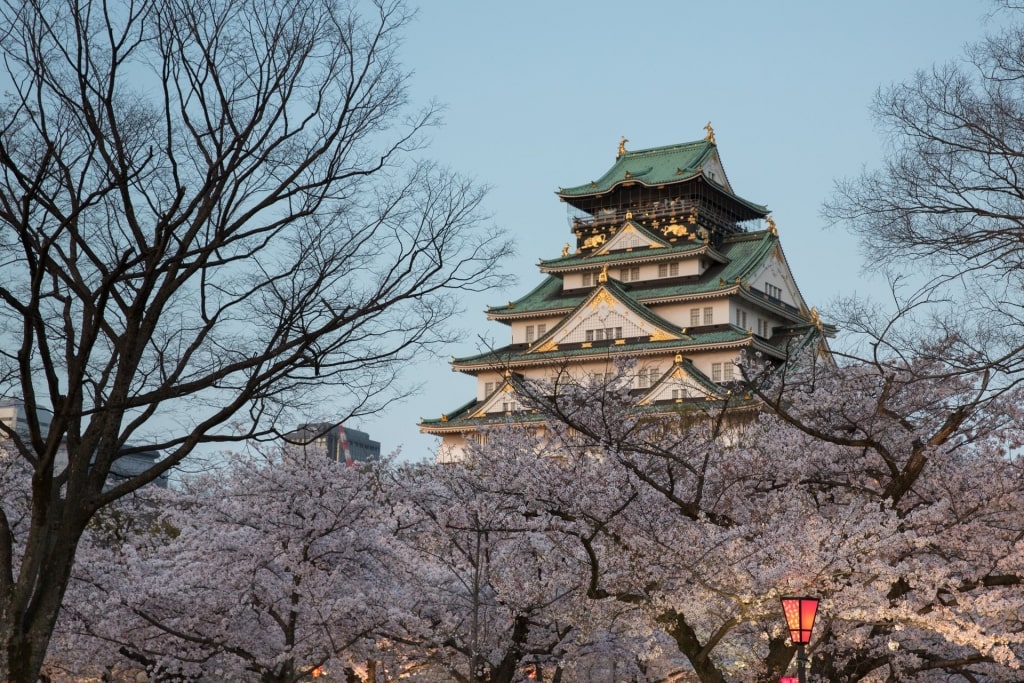
Osaka Castle
Osaka Castle is beautiful and makes a picture-perfect spot for a day trip. It’s even more stunning at night when both the castle and surrounding trees are brightly illuminated. There’s even an interactive light walk in the park around the castle (though you should book in advance).
Since Osaka Castle is best viewed from afar, plan to have dinner near the castle so you can see it glow in all its glory. For truly unbeatable views, have dinner on the Blue Birds Rooftop Terrace. It opens in the early evening for dinner service and offers Japanese-style gourmet BBQ. It’s bound to be the most memorable meal you’ll have in Osaka.
8:30 p.m.: Take a romantic stroll through the park
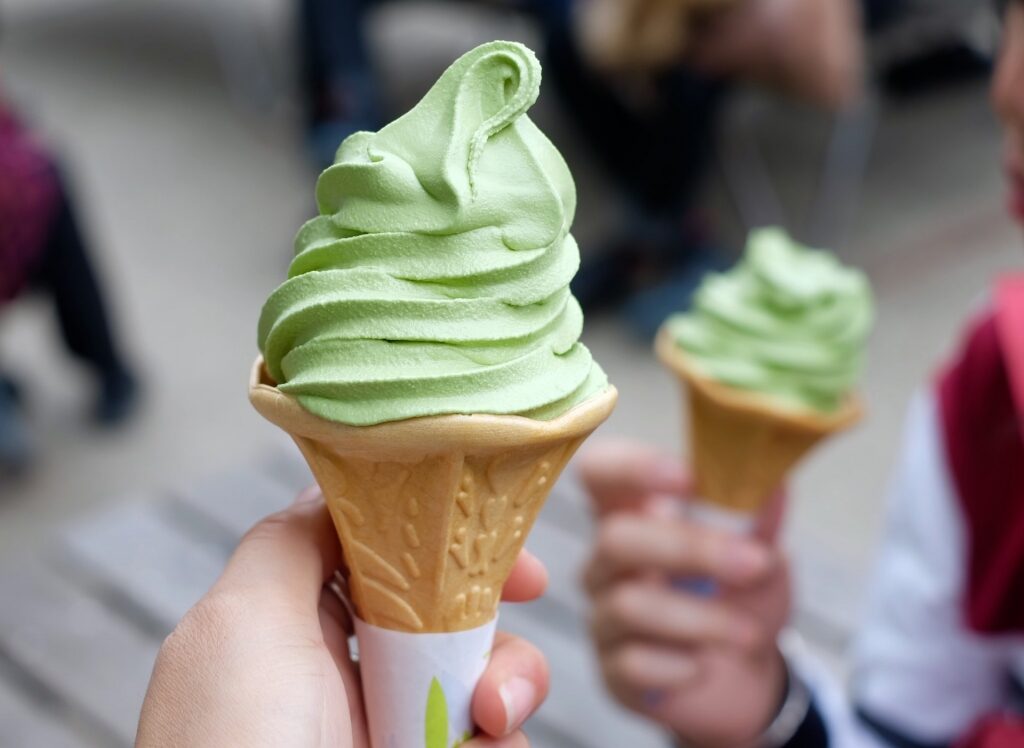
Matcha ice cream
After dinner, head for a romantic stroll around the Osaka Castle Park grounds. There’s no right or wrong place to walk since the whole park is lovely, especially at night. If you’re not too full from dinner, you may find a few mochi or ice cream vendors still set up if you want to treat yourself to a casual dessert. They usually stay later on warm summer evenings.
Day 2
8 a.m.: Soar to the top of Mount Rokko
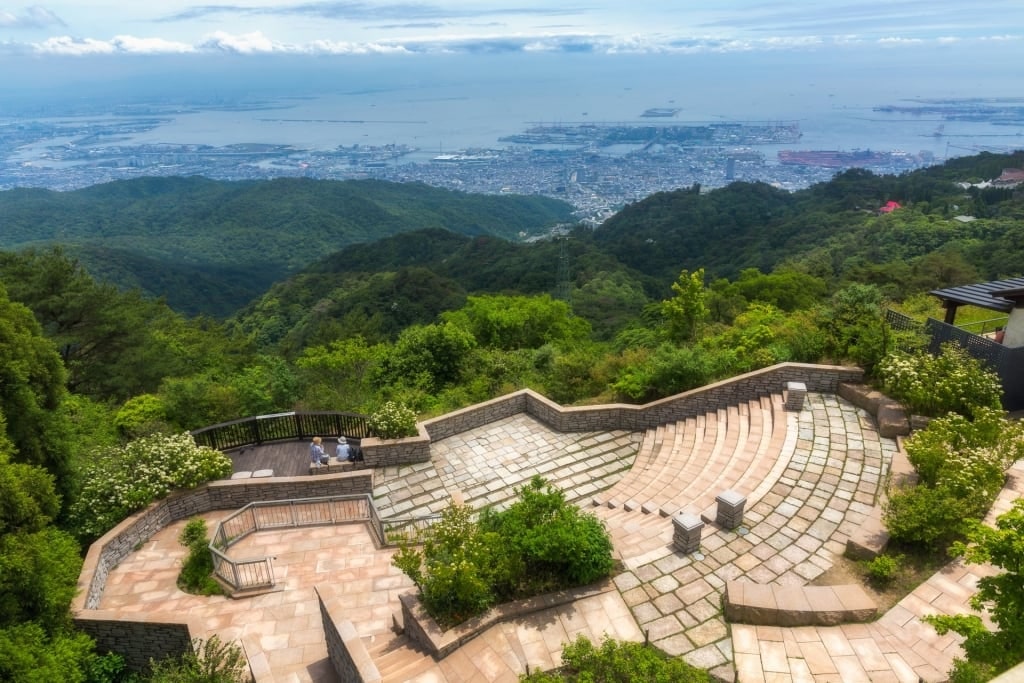
Mount Rokko
Spend the second morning of your Kyoto two-day itinerary exploring the sites outside of Osaka and Kyoto. For your final half-day, head to Mount Rokko, the highest peak in the Rokko Mountains near Kobe. You can take public transportation to get there, but as it’s outside the city limits, it’s usually easier to book a trip that includes transportation around the area.
To reach the summit of Mount Rokko, you’ll take the Rokko Cable Car. The 10-minute ride will whisk you into the Japanese mountains and 3,000 feet above sea level. You’ll have access to great hiking trails from the summit, which are a must if you’re interested in plants—there are more than 1,500 species on the mountain. At the top, you’ll find a fantastic lookout point, which offers some of the best views of Osaka, Kobe, Osaka Bay, and Awaji Island.
There’s a lot to do for non-hikers, too. Swing by the unusual Rokko Music Box Museum, explore the garden terrace and country house, or enjoy a mid-day sake at the outdoor cafe. If you haven’t yet gotten a bird’s-eye view of Japan during your trip, this is the best place to do it.
12 p.m.: Return to Kyoto for a sushi lunch
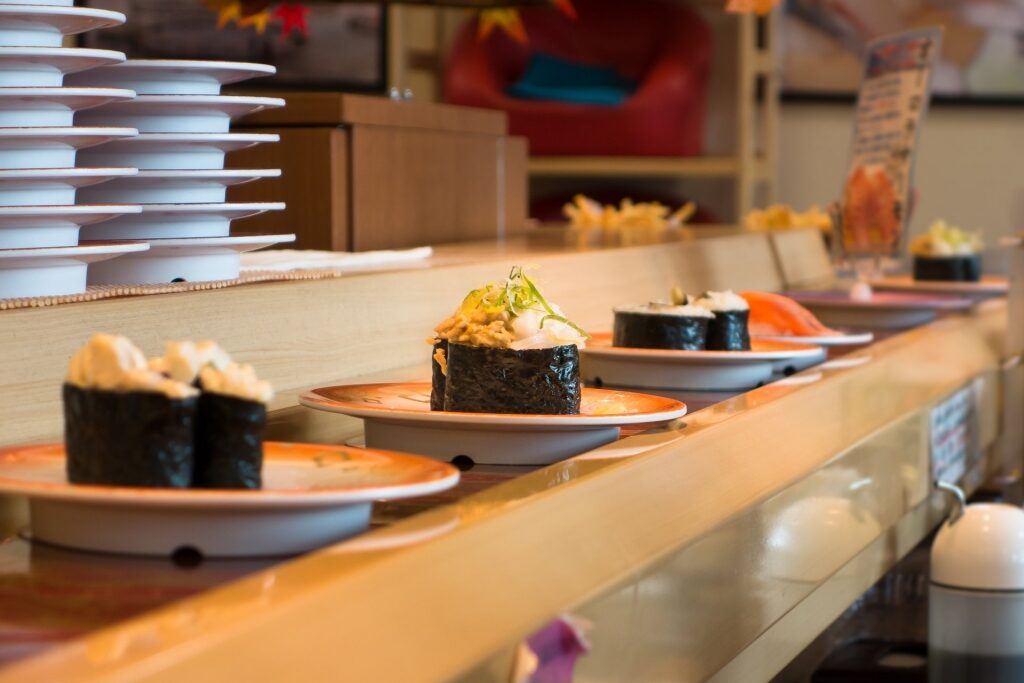
Sushi
Follow up your outdoorsy morning with a casual lunch at one of Japan’s most famous types of eateries: a sushi belt restaurant. These quick and casual restaurants send different kinds of sushi and sashimi rotating past diners on a conveyer belt or floating on “boats.” Simply grab the rolls you want, save the plates, and pay when you leave. It’s quick, fun, and a must-do for anyone who wants to try local sushi.
1 p.m.: Take a craft workshop at Marumasu Nishimuraya
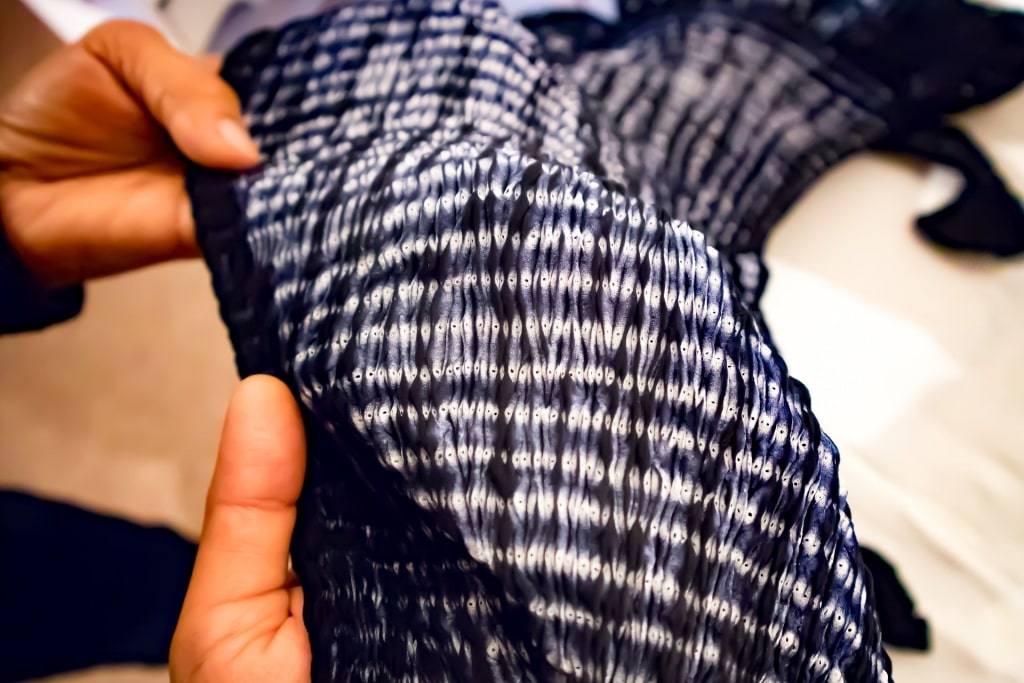
Marumasu Nishimuraya
Japan is known for its arts, which have played a central role in the country’s culture for thousands of years. Learn more about ancient creative traditions at Kyoto’s Marumasu Nishimuraya. You can make chopsticks, study the techniques behind traditional “furoshiki” gift wrapping, or dye your own silk robe.
Just be sure to make your reservations in advance as classes here are popular. In case you don’t make the perfect piece of art on your first time around, you can buy professionally made artisan items at the on-site shop.
6 p.m.: Have dinner in Osaka’s Dotonbori District
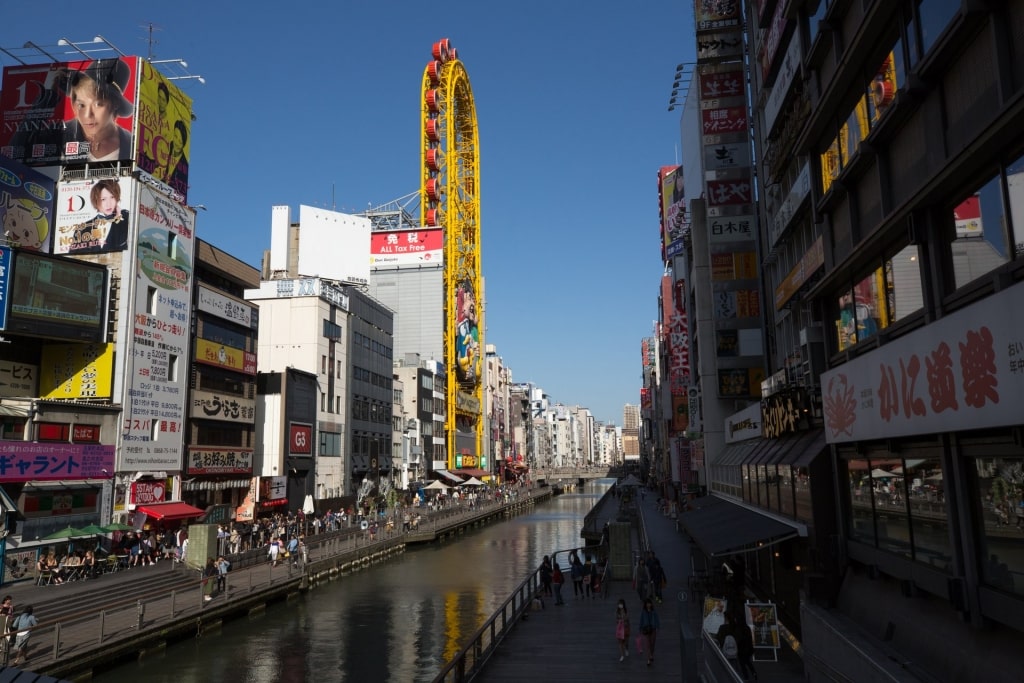
Dotonbori District, Osaka
Your two days in Kyoto are nearly up, but you can’t miss out on experiencing Osaka’s Dotonbori district. It’s a paradise for foodies, with traditional Japanese restaurants, tiny yakitoris selling beers and small plates, and food carts offering noodles, seafood, desserts, and other types of Japanese fare.
Food is a huge part of Japan’s culture, and this is truly one of the best places to experience it. Walk around and take in the sights, then stop for a Japanese beer while you decide what you want to eat. From there, build your own food-tasting tour, exploring small bites from several vendors. Adventurous eaters can try everything from octopus dumplings to liver skewers, while more traditional diners will find plenty of sushi, ramen, and noodle dishes to tempt their palates.
Read: Best Things to Buy in Japan
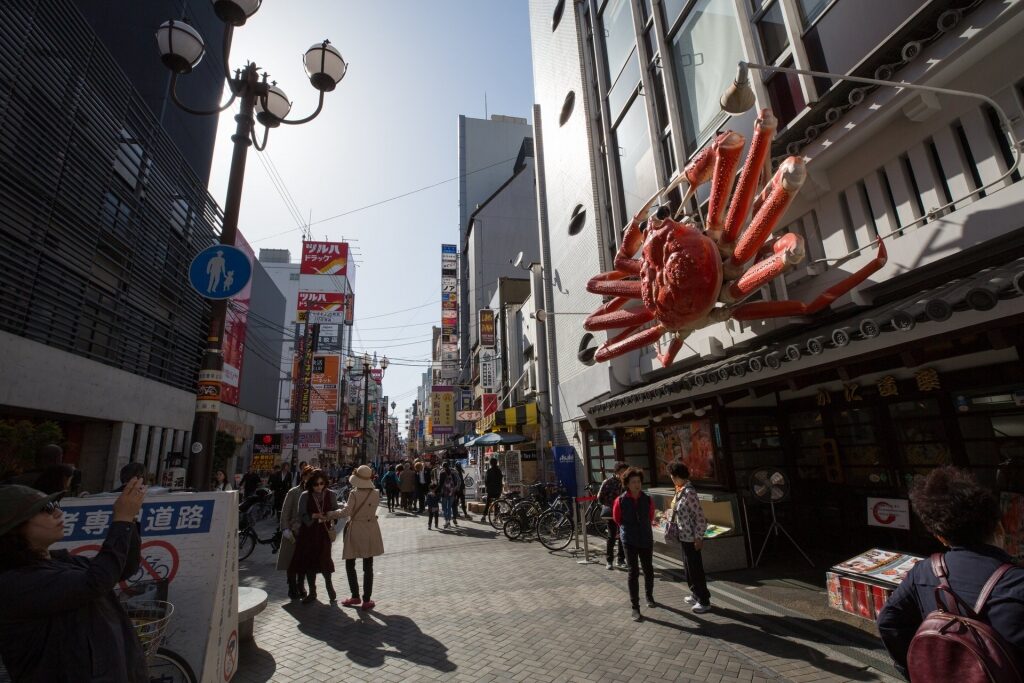
Dotonbori District, Osaka
One of the best ways to visit multiple destinations in Japan without dealing with complicated travel plans is to take a cruise that visits numerous cities throughout the country. Because the country is made up of a series of narrow islands, you can explore both the coastal areas and inland towns on a cruise to Japan.
Browse cruise itineraries on our website and book an incredible vacation to Kyoto and beyond today.
